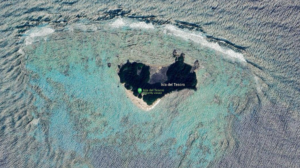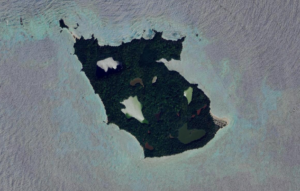
Cartagena is a city known for its rich history, vibrant culture, and stunning beaches, drawing tourists from all over the world. Yet, hidden within its famed Rosario Islands archipelago are two mysterious islands that many who visit or even live in Cartagena are completely unaware of: Treasure Island (Isla de Tesoro) and Isla Rosario. These islands are not just unknown—they are nearly inaccessible and largely untouched by the bustling tourism industry that surrounds them. But why is that, and what does it mean for their future?
Treasure Island: The Forbidden Sanctuary
Treasure Island, part of the Rosario Islands archipelago, is shrouded in secrecy. Access to the island is highly restricted, reserved only for the president, park rangers, and scientists involved in its conservation. This exclusivity is not without reason. Treasure Island has been declared an “Intangible Zone,” the highest level of protection within Colombia’s National Parks, due to its pristine condition and its critical role as a nesting ground for endangered sea turtles and various bird species.
The island’s untouched nature is both a blessing and a curse. Its isolation has allowed it to remain in an almost untouched state, but it is also under severe threat from coastal erosion. Over the past several decades, Treasure Island has lost nearly half of its original size. The relentless encroachment of the sea threatens to erase this natural sanctuary, taking with it the vital habitats that have been protected for so long.
The mystery of Treasure Island isn’t just in its limited access—it’s in the challenge of preserving it. As Camilo Valcárcel, a research and monitoring professional for the protected area, points out, “The goal is to maintain the conditions of this island in perpetuity.” But with erosion eating away at the island’s foundations, the future of this conservation zone is uncertain. The island’s role as a natural barrier against extreme weather events, which could protect nearby communities and the city of Cartagena, makes its preservation even more crucial.

Isla Rosario: The Silent Giant
Just as mysterious is Isla Rosario, a large island nestled behind Isla Marina, the Oceanario, and Isla Grande. Despite its size, Isla Rosario is almost completely overlooked, remaining free from the hotels and beach clubs that have come to dominate nearby islands like Isla Grande. It is a silent giant, rich in marine life, yet largely untouched by the outside world.
Local fishermen, aware of the island’s isolation, often venture to its waters under the cover of night to take advantage of its abundant marine resources. But like Treasure Island, Isla Rosario is also under threat from coastal erosion. The sea takes small bites out of the island every year, gradually reducing its size and threatening the delicate ecosystems that thrive there.
The obscurity of Isla Rosario raises important questions about preservation. The very isolation that protects its marine life could also lead to its downfall if action isn’t taken to protect the island from erosion. There is a delicate balance to be struck between keeping the island undeveloped and preserving it for future generations.

Why These Islands Matter
The mystery surrounding Treasure Island and Isla Rosario isn’t just about their inaccessibility or their hidden beauty—it’s about their role in the broader ecosystem and the challenges of preserving them in the face of environmental threats. These islands represent a unique paradox: they are both protected and endangered. Their isolation has allowed them to remain largely untouched, yet this same isolation means that they are particularly vulnerable to the forces of nature.
For Cartagena, a city defined by its tourism, these islands serve as a reminder that conservation must go hand in hand with preservation. Protecting these natural sanctuaries from the encroaching sea will require action from both local and national governments. It’s not just about keeping these islands off the tourist map—it’s about ensuring that they continue to provide the ecological benefits that have made them so vital for so long.
As we consider the future of these mysterious islands, we must think about the delicate balance between conservation and preservation. Can we keep these islands untouched while also protecting them from the very forces that threaten their existence? The answer will require common sense, proactive measures, and a commitment to safeguarding these hidden gems for generations to come.